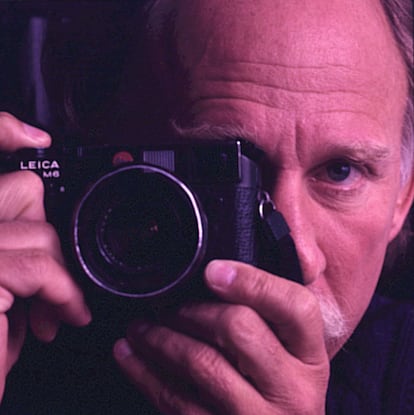Sebastião Salgado, the Brazilian who documented through photography the great contemporary challenges, such as the protection of the environment, migrations or work, has died this Friday at age 81, as confirmed by the Terra Institute, which he created with his wife, Lélia Wanick Salgado. The photographer has died in Paris, where he lived, because of a leukemia, according to his family, Efe reports. The disease was one of the many sequelae of a malaria that contracted decades ago. The artist, who took the photojournalism to the art category and mastery black and white throughout his career, planned to participate, this Saturday in Reims, in the inauguration of stained glass windows designed by one of his children for a church, according to Folha de S. Paulo.
Sebastião Ribeiro Salgado Júnior was born in 1944 in a town called Conceição do Capim, in the coffee and mining state of Minas Gerais. His training in economics molded his vision of the world, made him focus on the injustices that corrode the planet and marginalized. The artist’s label disliked him, he preferred to define himself as a photojournalist. Someone concerned about the evils that afflict the most disadvantaged, for consumerist avidity, for the health of the planet.
He dedicated his last great project to the Amazon, who portrayed in all his splendor in order to alert the world about his extreme fragility. It was in a way a return home after a successful international career. His exhibitions, in which beauty served to open deep reflections, toured the world. His wife was his closest collaborator as a curator of his exhibitions and editor of his monumental books, such as Éxodos, Genesis o Workers.
Lélia Wanick Salgado made the final selection of the images, the distillate of a documentary work that involved years of her husband’s trips through several countries she returned with thousands and thousands of images. The Brazilian put his lens on many of the most marginalized communities in the world, were rural workers, poachers in search of the gold peep that would change their lives, the Africans who wandered for desert lands in search of water and a future or the indigenous people.
In his 48 expeditions to the Amazon for several decades he was accompanied by a mountain guide. He also traveled with guides, translator, anthropologist and cook. Upon reaching a village, he accompanied the natives in their daily tasks such as hunting or cooking before placing a cloth to create a study in the middle of the jungle and ask them to pose.
“The indigenous people of Brazil have never been so threatened, but not so organized,” he said in 2022 by presenting in São Paulo the inaugural exhibition of Amazonia. The sample, the result of seven years of over -up and expeditions to the jungle. In that appearance he already made it clear that Amazonia’s was the final project of his life, but also that a photographer like him never retires because he never leaves the camera or the desire to document the world around him.
Still as an economist, Salgado began taking pictures with a Leica during some work trips in Africa. Fascinated, in a few years he left office as secretary of the International Coffee Organization and undertook a career as an independent photographer. The murder attempt by President Ronald Reagan, in 1981, at the hands of an actress’s admirer Jodie Foster, changed the life of the Brazilian photographer, who collaborated with some press agencies. Salgado, who covered the first 100 days of the Republican in power, witnessed the attack, in Washington, and his photos went around the world. With the money he won, he marched to Africa to work in his first personal project.

“It was said that I made aesthetics of misery. And shit! Photography my world,” said the Brazilian in an interview with The weekly country, In 2019, in reference to a verbalized criticism by Susan Sontag. In that conversation he also explained that his decision to work exclusively in black and white was due to the attempt to prevent the color of distracted to the observers of the protagonists of his work. Portraying the disadvantaged of the Earth was not a personal choice, he said, but a pure reflection of their origin. “I am a third world person. I know Africa as the lines of my hand because only 150 million years ago Africa and America were the same continent.”

